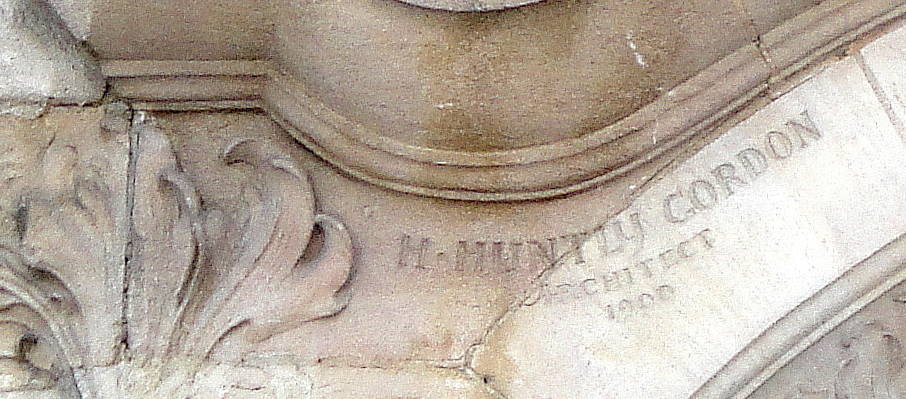
Two cupids by (John Hugh) Gilbert Seale (1862-1933). 1900. Stone, 1.1m high x 1.9m wide. Location: St. Bartholomew House (Architect: H. Huntley Gordon) at 92 Fleet Street, on the south side of the street. According to the Mapping Sculpture site, the sculptor, architectural sculptor, and architectural modeller joined the family business as did his son, John Hector Seale. Click on these images for larger pictures.
His decorative plasterwork schemes include Battersea Town Hall (1892-3) and the Old Bailey (1900-7) which were collaborations with the architect Edward William Mountford (1855-1908). Seale also executed the plasterwork for the ground floor of Debenham and Freebody's department store, Wigmore Street (architects, W. Wallace and J.S. Gibson, 1907-8). As a decorative carver, Seale's earliest recorded work is the warehouse designed by Herbert Ford at 5-13 St Paul's Churchyard (1895-8). He worked alongside William Aumonier on the capitals and decorated arches of W.H. Seth-Smith's church of St Luke, Reading (1896-7). Seale's most striking works include the carvings on Reginald Morphew's Estate House, 70-2 Jermyn Street, London (1902-3) and the monumental merpeople over the door of 41 Holborn Kingsway. [Mapping Sculpture]


Left: Doorway of St. Bartholomew House. Right: One of the cupids with bow and quiver full of arrows.


Signatures of architect and sculptor.
Photographs and caption by Robert Freidus. Formatting and perspective correction by George P. Landow. You may use this image without prior permission for any scholarly or educational purpose as long as you (1) credit the photographer and (2) link your document to this URL in a web document or cite the Victorian Web in a print one.]
Bibliography
“(John Hugh) Gilbert Seale.” Mapping the Practice and Profession of Sculpture in Britain and Ireland 1851-1951. University of Glasgow History of Art and HATII, online database 2011. Web. 14 June 2011.
Ward-Jackson, Philip. Public Sculpture of the City of London. Liverpool: Liverpool University Press, 1803.
Last modified 17 July 1811